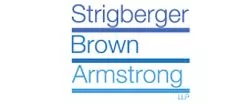In a recent decision, an Ontario court found that an insurer has a duty to defend a "software developer" in a U.S. action alleging copyright infringement. In the U.S. action, the insured was alleged to be the head of a group of hackers which sold subscriptions for unauthorized and derivative versions of several online computer games, including the popular game "Pokemon Go".
The insurer denied that it had a duty to defend, based on facts and evidence outside of, or extrinsic to, the pleadings in the U.S. action and the Policy in question.
The court took a dim view of the use of "extrinsic" evidence in determining the duty to defend, likening it to a rule 21 motion in which the allegations in the statement of claim are assumed to be true in determining whether or not the statement of claim discloses a cause of action. In the insurance context, the court found that only extrinsic evidence which is specifically referred to in the pleadings can be used in determining whether or not the insurer has a duty to defend the insured.
The court enumerated the principles to be applied in a duty to defend application, as set out by Mr. Justice Perell in his decision in The Corporation of the Town of Lincoln v. A.I.G. Insurance Company of Canada, 2020 ONSC 1456, as follows:
- The insurer has a duty to defend if the pleadings filed against the insured allege facts which, if true, would require the insurer to indemnify the insured.
- The court must determine whether the factual allegations, if true, could possibly support the plaintiff's legal claims.
- The pleadings govern the duty to defend, not the insurer's view of the validity or nature of the claim nor by the possible outcome of the litigation.
- In a duty to defend application, the court must determine the substance and true nature of the claims based on the allegations in the pleadings taking the entire pleading into account and without engaging in a fanciful reading of the statement of claim for the purpose of requiring the insurer to defend.
- If there is any possibility that the claim falls within the liability coverage, the insurer must defend.
- The court must look beyond the labels used by the plaintiff to ascertain the substance and true nature of the claims.
- If there is a claim that is outside or excluded from insurance coverage and a claim within insurance coverage, but the covered claim is entirely derivative of the uncovered claim, which is to say that the claims arise from the same actions and cause the same harm, then the derivative claim will not trigger a duty to defend.
- If the pleadings are not sufficiently precise to determine whether the claims would be covered by the Policy, the insurer's obligation to defend will be triggered where, on a reasonable reading of the pleadings, a claim within coverage can be inferred.
- In determining whether the Policy would cover the claim, the usual principles governing the construction of insurance contracts apply, namely: (a) the contra proferentem rule; (b) the principle that coverage clauses should be construed broadly and exclusion clauses narrowly; and (c) where the Policy is ambiguous, effect should be given to the reasonable expectations of the parties.
- Extrinsic evidence that has been explicitly referred to in the pleadings may be considered to determine the substance and true nature of the allegations.
- In the insurance policy contains an unqualified obligation to defend in respect of covered claims, the insurer is required to defend the entire claim; where there is an unqualified obligation to defend, the insurer is required to pay all reasonable costs associated with the defence of those claims, even if those costs further the defence of uncovered claims.
The court likened the insurer's attempt to use extrinsic evidence (including an expert report) to an attempt to turn a duty to defend application into a "mini-trial", and stated that the starting point for any duty to defend inquiry is the "pleadings rule" which specifies that the documents to be considered are the pleadings in the underlying action, any documents referenced therein, and the terms of the Policy itself, and stated categorically that a duty to defend application ought not to be a mini-trial.
After rejecting the insurer's extrinsic evidence, the court found that the insured had met its burden of showing that the allegations in the pleadings fell within the coverage afforded by the policy (i.e. there was a mere possibility that there may be indemnity for the insured), and that the insurer (absent the extrinsic evidence) had not met its burden to prove the application of any exclusions which might negative coverage. As such the insurer was ordered to defend the U.S. action against the insured.
Insurers would be well served to consider the above (especially the nine principles outlined by Mr. Justice Perell and echoed here) in considering whether or not they have a duty to defend in future matters. In addition, insurers should clearly resist any impulses to consider extrinsic evidence in determining a duty to defend.
Strategically, insurers in similar situations may have a better chance of success in bringing an application for a declaration that no coverage is owed to the insured. The notice of application can refer specifically to the evidence, it can be included in the notice, and then it can be considered by the court in making a determination.
See IT Haven v. Certain Underwriters at Lloyd's, London, 2020 ONSC 7835
The content of this article is intended to provide a general guide to the subject matter. Specialist advice should be sought about your specific circumstances.

